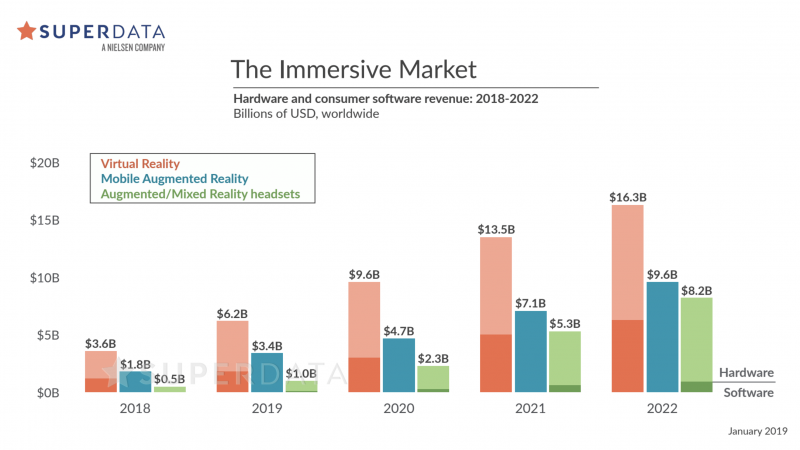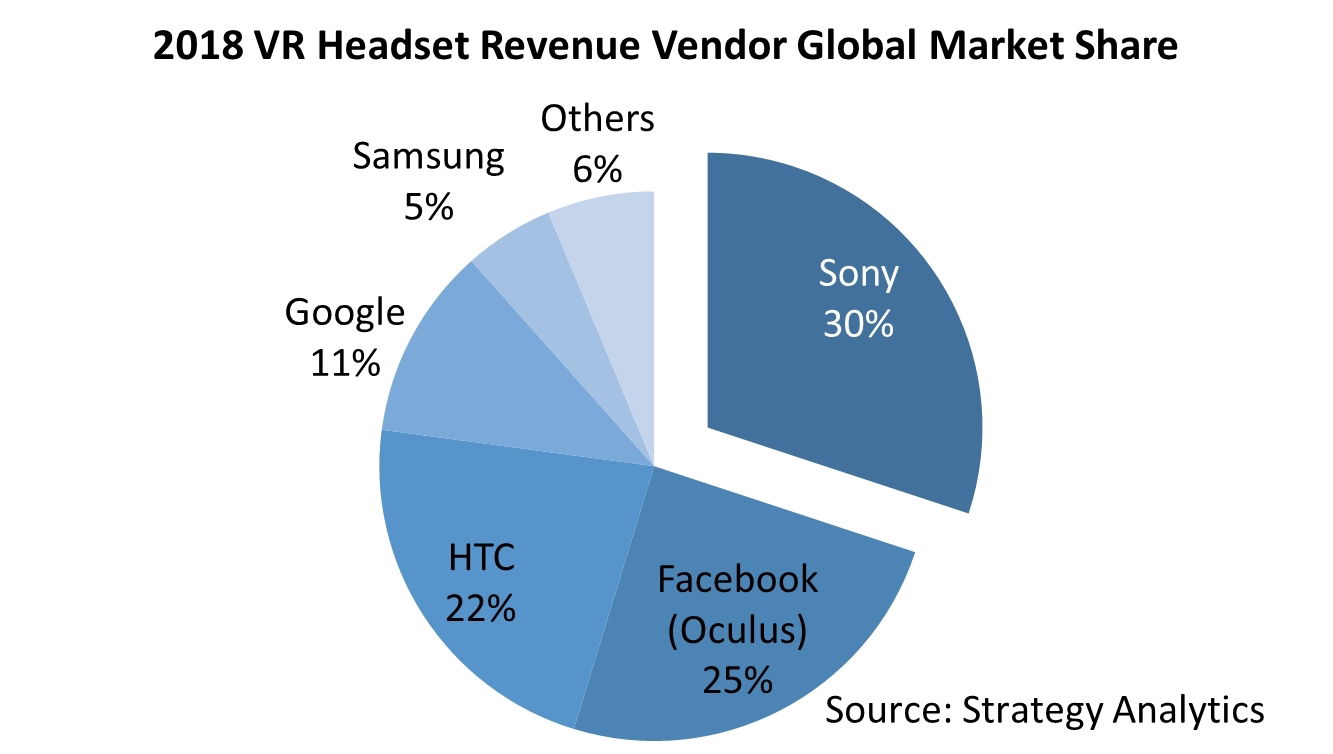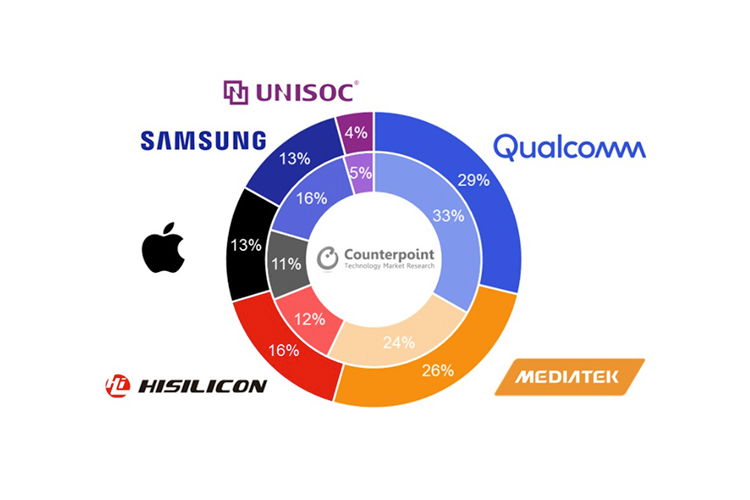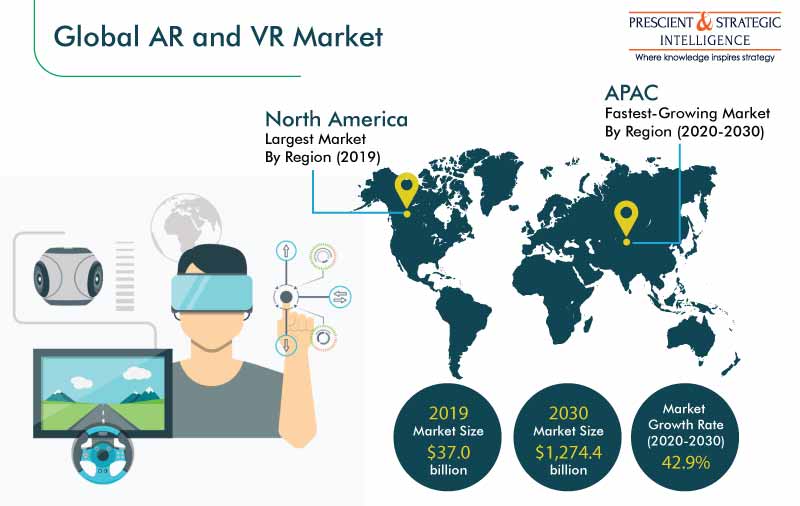
For decades, the demand for virtual reality has celebrated as the "next big thing" but VR has consistently misled customers with inferior hardware devices and app experiences.
But in recent years, a flood of refined appliances has narrowed the distance between customer preferences and. The future of the VR market has yet to be written, but investors who believe in this budding market should these four tech stocks.

1. Sony Business
With over 5 million shipments since its launch in October 2016, Sony's (NYSE SNE) PlayStation VR is the world's best-selling VR headset. That only represents a sliver of 110 million PS4s from Sony's installed base, but that foothold has inspired developers to create more stand-alone VR games and PS4 game add-on experiences.
The PSVR would be completely compatible with the upcoming PS5, and the next-gen console could differentiated from Microsoft's (NASDAQ: MSFT) Xbox Series X. Microsoft has already said that its latest console would not emphasize VR experiences, but when combined with the more powerful hardware of the PS5, the PSVR could dazzle more games.
Last year, Sony's console gaming company generated 24% of its sales and 28% of its operating income, but its growth is slowing as gamers delay their purchases ahead of the launch of the PS5. A strong VR-supported launch during the holidays could therefore breathe fresh life into this core business.

2. To Twitter
According to Super Data, Facebook's (NASDAQ:FB) Oculus Quest, its second stand-alone VR headset after the Oculus Go, was 2019's second-best-selling VR product, with 705,000 shipments worldwide.
Compared to PCs and tablets, this is still a niche segment, but the ecosystem of Search is growing. In May, it sold over $100 million in virtual reality content for the Search over the past year, Facebook reported.
Facebook primarily attributed its 80 percent year-over-year leap in "other" sales to strong Oculus Quest demand last quarter. This company, which also produces its portal devices, produced less than 2 percent of Facebook's revenue, which mostly comes from advertising, but as Facebook launches additional VR devices, it could expand dramatically over the next few years.
Facebook could incorporate its key social network, Instagram, WhatsApp, and other services tightly into its Oculus platform over the long term. If that happens, instead of conventional apps, people will start socializing in VR spaces and pave the way for genuinely next-gen social media experiences.
At the F8 meeting, Sean Liu, Facebook's Product Management Officer, will discuss Facebook's VR plans.

3. The Qualcomm
Qualcomm (NASDAQ:QCOM), the world's biggest mobile chip maker, produces much of its smartphone industry sales. But it has struggled in recent years with declining demand for smartphones, lower-end and first-party chip makers' competition, and investigations and fines that question the supremacy of its chip making and wireless patents in the industry.
Qualcomm has advanced into other markets, including Internet of Things (IoT) chips, driverless vehicles, drones, and AR/VR headsets, to reduce its focus on the smartphone market.
The Snapdragon VR Mobile Platform from Qualcomm, which optimizes its mobile SoCs (chip system) for VR headsets, currently powers stand-alone devices including the Oculus Quest from Facebook. The mobile VR chips from Qualcomm would not instantly shift the needle and counter its slower smartphone chip sales, but they could gradually gain traction as more businesses launch stand-alone headsets that are not connected to phones or PCs.
4. Technologies at Himax
Taiwanese chipmaker Himax Technologies (NASDAQ:HIMX) produces much of its revenue for smartphones, laptops, displays, and TVs from display driver integrated circuits (ICs). Demand for these chips, especially in the saturated market for LCD panels, has been weak.
Last year, however, 19% of Himax's revenue came from its non-driver business. This secondary business manufactures various components of liquid crystal on silicon (LCOS), LCD timing, and wafer-level optics (WLO), all of which are essential for VR and AR headsets. For the development of smaller camera modules, LCOS chips block light with reflective crystals, LCD timing chips monitor the displays, and the WLO process shrinks optical chips.
Earlier, Himax provided components for Facebook's Oculus Rift and Microsoft's HoloLens developer versions. It's uncertain if these tech giants will continue to use Himax chips in their new consumer-facing products, but in the growing VR market, the chip maker should remain a major supply chain player.
The Key Takeaways
Investors alone should not purchase Sony, Facebook, Qualcomm, and/or Himax shares for their VR aspirations, as all four companies derive much of their revenue from other core companies. But these four businesses will all benefit from the steady growth of this nascent market over the long term.
Want more winning stocks for 2021? Subscribe to our mailing list now and you will notify soon.
You should also check out the following articles:
- Apple’s first headset will focus on “high-quality” games, reporter claims
- Pets, people, and Android Phone Notifications are now visible in Quest 2.
- 30 The top virtual reality games in 2021
- 10 Accessories to Improve Your Flight Simulator in VR
- November 26, 2021 is Black Friday. Deals on Video Games and Virtual Reality in 2021
- Facebook wants to build a metaverse. Microsoft is creating something even more ambitious.
- Metaverse’s Cryptocurrency Leaps in Price After Facebook Rebrands as Meta
- Best VR Gifts for Christmas in 2022
- What is Augmented reality (AR) ?
- How to succeed in the virtual reality world of tomorrow?
- Soon you will taste and chew, touch and smell in VR
- Books you must read about virtual reality
- Best New Augmented Reality Books To Read In 2021
- virtual reality Life 2029
Subscribe now to our YouTube channel
Subscribe now to our Facebook Page
Subscribe now to our twitter page
Subscribe now to our Instagram
Subscribe To my personal page on linkedin
Subscribe To my personal page on tiktok page for those who love to dance :)
Don't forget to be my friend. Sign up for my friend's letter. So I can tell you ALL about the news from the world of VR&AR, plus as my new friends I will send you my new article on how to make money from VR&AR for free.


